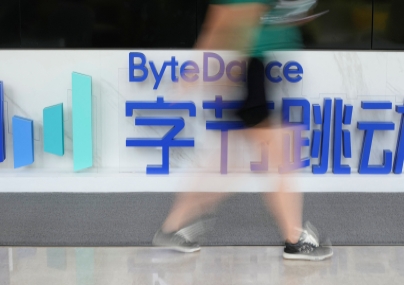
中国近期加强了对于二次创作类侵权短视频的打击力度,再次彰显保护知识产权的决心。
工作太忙,没时间追最新电影或电视剧?中国的短视频平台给出了“解决方案”。在以抖音、快手、B站为代表的平台上,只要输入剧集名称,就会搜出数以万计的短视频,这些视频浓缩截取了热门剧集的精华片段和台词,有的还进行了二次创作。然而伴随中国加强知识产权保护力度,这样的行为可能不再被允许。
以《甄嬛传》为例,有人在某平台上将这部76集的电视剧剪辑为223个短视频发布,总播放量高达3亿。以短视频方式追剧已经成为最受中国Z世代欢迎的娱乐方式之一。
然而,伴随2021年初习近平在中央政治局会议上再次强调知识产权保护及刺激创新的重要性,从监管机关到社会群体,中国已经全面对知识产权侵权行为宣战。中国“正在从知识产权引进大国向知识产权创造大国转变”,新华社指出,用短视频截取改编他人作品的行为显然和这一形象不符。
自4月中旬起,包括中宣部、公安部、最高院、国家电影局在内的行政司法机关先后表态,明确将“加大对短视频领域侵权行为的打击力度,整治短视频平台以及自媒体、公众账号生产运营者未经授权复制、表演、传播他人影视、音乐等作品的侵权行为”。
在今年的世界知识产权日前夕,中国超过70家影视传媒单位和500余位影视从业者联合发布倡议,抵制网络短视频侵权现象,抵制者中既有影视公司,也包括腾讯、优酷、爱奇艺这类流媒体平台。
是否违法
根据现有法律,上述视频是否构成侵权?律师指出,这要视短视频的具体内容而定。
安理律师事务所合伙人杨曙光律师是娱乐传媒领域专家,他分析道,现有短视频大概可以分三类:第一类直接将影视剧片段截取并上传,属于纯粹的侵权行为;第二类以剪辑、拼接、旁白等方式对影视剧进行浓缩,最典型的就是“xx分钟带你看完电影”类视频;第三类则添加了更多二次创作内容,例如各类鬼畜视频。
搭配了up主全新创作的短视频是否侵权,要依据《著作权法》所规定的侵权判定规则进行判断。对于这一问题,“《著作权法》规定了‘接触加实质性相似’原则”,杨律师解释说,“一旦原作品在网络上公开,司法实践就会认定侵权人具有接触原作品的渠道;实质性相似则关注原作品素材在短视频中所占比例,如果占比特别少,就存在不被认定侵权的可能,但在实践中往往存在分歧”。
金诚同达律师事务所高级合伙人周俊武律师在娱乐传媒领域有近30年执业经验,他同样认为此类短视频是否违法要因“频”而异,核心判断标准在于其“是否对相关作品构成合理使用”。
周律师指出,6月1日刚刚生效的新《著作权法》第24条规定了12种合理使用情形,其中第二项,“为介绍、评论某一作品或者说明某一问题,在作品中适当引用他人已经发表的作品”最为适用。
虽然何为“适当引用”在实践中存在很大解释空间,但在他看来,“当前互联网平台上大量短视频显然超过了合理使用的范围,例如‘xx分钟带你看完电影’这类节目,全部或绝大部分内容都取材自影视作品,通常会被认定为改编作品”。
一旦被认定为改编,短视频创作者就可能面临一系列违法后果,“未经著作权人许可的改编行为将涉嫌侵犯改编权;二次创作过程中出现改动还可能涉嫌侵犯修改权,改动过大则涉嫌侵犯保护作品完整权;如果上传到平台,还涉嫌侵犯信息网络传播权”,周律师说。
便利维权
虽然大多数情况下此类短视频的违法性不言而喻,但影视剧制作者却长久面临着维权难问题。
谈到个中原因,周俊武律师指出几点,“互联网背景下,短视频侵权行为往往侵权人数众多,具有隐蔽性,还面临取证难等技术性问题”。此外,“平台责任缺位也是原因之一:直接起诉博主存在难度,平台也缺乏主动承担治理责任的动力”。诸多因素叠加,导致“权利主体很有可能选择放弃维权”。
杨曙光律师对此表示认同:“通过法院诉讼维权,不仅要聘请专业律师,还要进行取证,成本很高。对于被侵权人来说,如此高成本的投入往往只会被判赔三五千元,很不划算。”
不过,新《著作权法》将有望改变这一现状。“新法的创举之一就是提高了侵权行为的惩罚力度。”杨律师指出,“例如第54条明确规定,侵犯著作权或者与著作权相关权利的,侵权人按照权利人受到的实际损失,或者侵权人违法所得给予赔偿。实际损失难以计算的,可参照该权利的使用费给予补偿。”
除此之外,新法还首次在中国著作权保护领域建立了惩罚性赔偿制度。周俊武律师指出,同样根据第54条,对故意侵犯行为,“情节严重的,可以在按照上述计算方法确定数额的一倍以上五倍以下给予赔偿”,此外,新法还将著作权侵权赔偿的法定赔偿额上限从50万元提高至500万元,以“通过经济杠杆鼓励著作权人积极维权,避免此前维权得不偿失的尴尬”,周律师说。
不过两位律师都指出,虽然预期新法将打击恶意侵权行为泛滥,但由于刚刚生效,其对市场的影响还要依司法实践、法院执行力度而定。“很多客户现在都来咨询。”杨曙光律师坦言,“但他们会问:你预期诉讼要用多长时间?成本是多少?一旦真正有判例提高了赔偿额度,相信会鼓励更多人维权。”
平台责任
有趣的是,虽然涉嫌侵权视频的制作者大多是个人up主,但在这一次的“讨伐大战”中,以腾讯、优酷、爱奇艺为代表的原创内容平台则将矛头指向了以抖音、快手、B站为代表的短视频平台。
在杨曙光律师看来,这反映出此次短视频之争背后的矛盾根源是流量大战。“现在获益的是谁?一个是up主,另一个是短视频平台。然而有人获益,就有人遭受损失。”他说。
如果说曾经短视频被视为正版影视剧的传播推手,得以在灰色地带长久存在,如今,伴随长短视频愈发激烈地争夺受众的注意力,流媒体平台显然急于将对手清理出场。那么,短视频平台是否要为用户发布涉嫌侵权视频承担责任?对于此,受访律师都提到了《民法典》中的“避风港原则”和“红旗原则”。
杨律师具体解释道,“避风港原则”吸收了美国《数字千年版权法案》(DMCA)中的类似原则,即平台有通知和删除义务,当平台接到侵权通知时,需要及时履行转通知义务,并采取类似暂时封号、下架视频等措施,以此避免与侵权人承担连带责任。
“红旗原则”则更进一步。“网络服务提供者知道或者应当知道网络用户利用其网络服务侵犯他人权利的,未采取必要措施的,要承担连带责任”,杨律师说,“例如某个明显侵权的视频在平台点击量极高,甚至在平台首页占据位置,平台如果不采取措施,就要承担连带责任。”
金诚同达律师事务所合伙人米新磊律师补充道,《信息网络传播权保护条例》也规定,网络服务商对在合理成本下能够判断的侵权行为负有注意义务。“然而在实践中,何为‘应当知道’或‘能够判断’……是一个极具实务操作的难题。”米律师说,“可以确定,平台对其上的作品不具有普遍审查义务,因此无法判断海量网络用户的传播行为是否构成合理使用,也就几乎不会承担什么责任。”
然而正如腾讯副总裁孙忠怀所说,短视频盗版就像“屋子里的大象”,当平台存在大量以截取或再创作他人作品为内容的短视频,法律显然不会鼓励这种显然的视而不见。
“主打短视频的平台通常比一般平台更需要强调审核和监管义务,尤其是影视作品解说、游戏解说等专栏,存在极大侵权风险。”米律师指出,“当下的短视频创作和发布已经与平台密不可分,平台在组织用户、鼓励创作、发布视频内容等方面都起到了较大作用,而且平台通过用户上传视频获得了直接经济利益,例如会员费用、广告收入、网站流量和知名度等,因此也应该加大责任。”
探寻新模式
在海外,平台对于短视频已经有比较成熟的保护意识,以Facebook为例,系统会对上传的每一个视频进行审核,只要重合度达到4%以上,就会被判定为侵权。
伴随监管大风吹起,未来短视频平台是否会因此丧失大量热门内容,导致不得不重新思考盈利模式?杨曙光律师对此持否定态度。“涉嫌侵权的短视频只是新生视听作品里的小部分。政策法律可能会使侵权方遭受损失,但也能够去伪存真,留下好的原创作品。”他说。
周俊武律师观察到,“部分短视频UP主已经开始探索转型,这说明监管和反对声音的加强,的确导致了从业者的警醒”。“值得一提的是,新《著作权法》第3条扩大了覆盖范围,将‘类电作品’更改为‘视听作品’,由此短视频等新型视听节目也被明确纳入著作权法的保护体系,更说明了我国鼓励各种形式的创作,短视频产业不会被打压,而是会更加规范,更加良性发展。”他补充说。
杨律师和周律师都建议,长短视频应该积极展开合作,实现多方共赢。杨曙光律师具体解释道:“例如中国的音著协、音集协将大量音乐版权收集到平台,供用户支付少量费用使用。中国也有影著协,但没有发挥作用,未来或许也可以采用这种方式。或者由资本雄厚的平台和影视公司展开合作,由平台购买版权,或者进行宣传和短视频改编权的置换……这都鼓励了新商业模式的诞生。”
周俊武律师则补充了其他建议,例如充分发挥行业组织作用,构建利益平衡新型补偿机制,“也有人提出可以给短视频创作者列出知识产权保护白名单,比如对视频二次创作使用的时长、时段、单一作品的比例等进行细化,并划定出可使用的范围和范畴”。
无论如何,如周律师所言,“疏于监管的灰色地带不意味就是合理的,未来监管加强和维权行为的大量涌现,会倒逼行业进行自律和净化”。可以预见,未来短视频平台的核心竞争策略将围绕原创内容展开。
Combating Clip Shows
China’s recent crackdown on clip shows, or videos created by splicing together scenes from movies or TV series, demonstrates the country’s resolve to ramp up its protection of intellectual property.
Too busy to catch up on the latest movies or TV shows? Short-video platforms in China currently offer a solution. On platforms such as Douyin, Kuaishou or Bilibili, one can find tens of thousands of short videos that are created by combining together the clips and excerpts from popular shows, some of them even featuring witty commentary. But as China intensifies the protection of intellectual property, these clip shows could soon be history.
Take the example of ‘The Legend of Zhen Huan,’ a popular historical TV drama. Online content creators have made 223 short videos using clips from this 76-episode show so far, and these videos have been video some 300 million times. Watching these short clips to follow television series has become one of the most popular forms of entertainment for China’s Gen Z.
However, with President Xi Jinping underscoring again earlier this year that more efforts will be made to step up protection of intellectual property, these clip shows’ days are numbered. China "has now come to the transition point from a major IPR importer to a major creator of IPR," says Xinhua News Agency, noting that the act of using other people's works to make short video clips does not conform to this new image.
Since mid-April, administrative and judicial agencies including the Central Propaganda Department, the Ministry of Public Security, the Supreme People's Court, and the China Film Administration, have all pledged "to intensify the crackdown on infringements in the form of short videos, and rectify infringing acts discovered on short-form video platforms."
And few days before World Intellectual Property Day this year, a number of Chinese films and television media organisations and film and television industry personalities jointly launched an initiative to boycott short video clips. Among those calling for boycotts are film and television companies, as well as streaming platforms such as Tencent, Youku, and iQiyi.
NOT FUNNY ANYMORE
But are these clip shows illegal under prevailing laws? It depends on how the videos are created, lawyers say.
Yang Shuguang, a partner at Anli Partners, is an entertainment law expert. He says that there are roughly three types of short videos. The first type includes simply clips and excerpts from films and television dramas, which are infringements for sure; the second type involves summaries of the original works by clipping, editing and adding narration; and the third type contains more original content, for example, the so-called guichu videos.
Since the last two types contain more original content, it comes down to how much similarity there is to the original. “The Copyright Law provides for the principle of 'having gained exposure to' plus 'substantial similarity,’” says Yang. Once an original work is published on the Internet, the infringer is deemed to have been exposed to the original work, and the concept of “substantial similarity” focuses on the proportion of the original work materials in the short video in question, Yang explains.
Zhou Junwu, a senior partner at Jincheng Tongda & Neal, has been practicing in the entertainment and media space for nearly 30 years. He is also of the opinion that whether such short videos are illegal depends on "whether the original work materials are used excessively." The core criterion is whether "the original work materials are used within a reasonable extent."
Zhou points out that Article 24 of the newly revised Copyright Law, which became effective on June 1 this year, provides for 12 circumstances of proper or reasonable use of original materials, of which Item (2) stipulates that “A proper citation of others' published works in a work for introducing, or commenting on, a particular work or for elaborating on a particular question.”
In practice, there is much room for interpretation of "proper citation.” In Zhou's opinion, "a large number of short videos on the platforms obviously exceed the scope of proper or reasonable use of published works, such as a type of short videos entitled 'Taking you through a movie within xx minutes'. All or most of the contents of this kind of short videos are based on movies or television dramas, and are usually regarded as adaptation works."
Once identified as an adaptation, the short video creator may face a series of consequences for the illegal act. "Adaptation without the permission of the copyright holder is an alleged infringement of the right of adaptation; if there're changes to the original work in the process of secondary creation, it is an alleged infringement of the right of modification; if excessive changes are involved, it's an alleged infringement of the right to protect the integrity of the work; and if short video in question is uploaded to a platform, it's an alleged infringement of the right of online information dissemination," says Zhou.
FACILITATING RIGHTS PROTECTION
Therefore, it is evident that short videos are illegal in most cases. But the fact is that creator of films and television dramas have struggled to defend their IP rights.
"In the era of the Internet and social media, short video infringements often involve a large number of infringers, and it's difficult to discover those infringements as evidence cannot be obtained easily, coupled with other technical difficulties. Moreover, platforms taking no responsibility for those infringements is also one of the reasons," says Zhou, who adds that "the subjects of rights tend to give up safeguarding their IP rights" in those cases.
Yang echoes Zhou's opinion and notes: "It could be costly if to protect IP rights through court litigations as the subjects of rights need to hire lawyers and gather evidence. Considering the compensation for this kind of infringements ruled, usually 3000 to 5000 yuan, lodging lawsuits is not cost-effective at all."
With the newly revised Copyright Law, the situation is expected to change. "One of the big changes in the new Law is that tougher penalties will be imposed for such infringements," says Yang. "For example, Article 54 of the Copyright Law clearly stipulates that an infringer shall make compensation according to the actual losses suffered by the rights holder as a result or the illegal gains obtained by the infringer as a result; and, where the actual losses are difficult to calculate, compensation may be made by reference to the royalties of the relevant rights."
Furthermore, the new law introduces and sets up a punitive damages system in copyright protection for the first time in China. According to Article 54, regarding intentional infringements, "compensation may be made in the amount of not less than one time but not more than five times the amount determined according to the above method.” And the upper limit of damages has been increased from 500,000 yuan to 5 million yuan to "encourage copyright holders to actively defend their rights, and to defeat the dilemma scenario where the compensation received can't cover the cost for lodging a lawsuit," says Zhou.
Both lawyers point out that while the new Law is expected to crack down on the rampant malicious infringements since it has just come into force, how it will affect the market still depends on future judicial practices and court decisions.
HOLDING PLATFORMS RESPONSIBLE
Interestingly, although most of the alleged infringement videos are created by individuals, in this "battle against copyright infringements in short videos,” platforms such as Tencent, Youku and iQiyi, which themselves create films and dramas, point fingers at short video platforms like Douyin, Kuaishou and Bilibili.
In Yang's opinion, it reflects that what's really behind the short video dispute is the competition for online traffic. "Who are benefiting from the short videos? The content creators or uploaders and the short video platforms. There certainly will be disputes when some make profits while others incur losses," he says.
If such short videos were once regarded as free publicity or advertising tools for films and television dramas, and thus have been able to exist for a long time in a grey area, long-form videos and short-form videos are now becoming more like rivals in grabbing the audience's limited attention, and therefore the streaming media platforms are trying to exclude their rivals from the market. Should short video platforms be held liable if their users publish alleged infringing videos on the platforms? Regarding this question, all interviewees point to the "safe harbour principle" and the "red flag principle" in the Civil Code.
The "safe harbour principle" means that a platform has the obligation to notify and delete, Yang explains. When a platform receives a complaint, it should perform the obligation of forwarding the notification in a timely manner and take measures such as temporarily banning the user's account and/or removing the related videos. In this way, the platform will not bear the liability.
The "red flag principle" goes even further. For example, a video containing obvious infringing content is published on a platform and has been played for a great number of times, and therefore becomes so popular that it is displayed on the homepage of the platform. If the platform fails to take any measures, it will bear joint and several liabilities, Yang says.
"But in practice, it's very difficult to define 'should know or should be aware of' or 'being able to judge or identify,’" adds Mi Xinlei, a partner at Jincheng Tongda & Neal. "What can be certain is that a platform has no obligation to conduct a general review of all works published on it; therefore, it's unable to judge whether or not the dissemination behaviours of its users fall within the scope of the proper or reasonable use of original works, and thus it'll hardly bear any responsibility."
It's like the elephant in the room - Sun Zhonghuai, vice president of Tencent, once said, when there're numerous short videos on the platforms, of which the contents are mere clippings, excerpts or secondary creation of others' works, the regulators will not shut their eyes and ears to such an obvious problem of short video piracy.
“Platforms that mainly publish short videos need to step up more efforts to fulfil their obligation of reviewing and monitoring the videos published or uploaded, in particular the columns of film and television drama commentary, and game commentary, which might involve a high risk of infringement," Mi says. "Short video creation and release are inseparable from platforms, which play a major role in organizing users, encouraging the creation, and publishing videos. Moreover, platforms obtain financial benefits directly from videos uploaded by users by means of membership fees, advertising revenues, website traffic and popularity, and therefore should undertake greater responsibilities."
EXPLORING NEW MODELS
Nowadays, platforms overseas have developed practical systems to ensure that short videos published or uploaded are legal. For example, Facebook has a system reviewing every uploaded video. If 4 percent or more content of a short video overlaps that of the related original work, the system identifies the short video as an infringement.
Will short video platforms lose their most popular contents amid the new wave of regulations? And if so, will they have to rethink their revenue models? Yang does not think so. "Short videos involving tort contents only account for a small proportion of the new-type audio-visual works. Policies and laws will subject tortfeasors to liability and make them pay for what they ought to pay. Eventually, good original works will stay competitive in the market," he says.
"Some short video uploaders already started to explore ways for transition," Zhou observes. "It is worth mentioning that Article 3 of the newly revised Copyright Law has expanded the scope of 'works' – the stipulation of Item (6) has been changed from 'cinematographic works and works created by means similar to cinematography' to 'audio-visual works'. As a result, new-type audio-visual programs such as short videos have also been explicitly included in the protection system of the Copyright Law, indicating that instead of stifling the development of the short video sector, regulators encourage various forms of creativity in a more normative way," he adds.
Yang and Zhou both suggest that long-form and short-form videos actively work together to achieve a win-win situation for all parties. "For example, the China Audio-Video Copyright Association and the Music Copyright Society of China put a large amount of licensed musical works on platforms, and charge a small fee on users who want to gain access to those works. The China Film Copyright Association maybe can do the same in the future. Some other solutions could be, for example, well-capitalized platforms and film and television companies form join operations, where platforms buy copyrights, or use the short video adaptation right fees to partially or fully cover the costs for advertising films and television shows. These perhaps would accelerate the birth of new business models," says Yang.
Zhou gives other suggestions, including giving full play to the role of industry organizations and building a compensation mechanism. "Some propose to develop an IP protection white list for short video creators, stipulating detail criteria such as how long the original video can be used in the secondary creation, and the proportion of a single original work can be used in a short video, and setting forth the applicable scopes and domains," he says.
"The grey area can be by no means justified even through it was less regulated," as Zhou says. "With intensified regulation, along with right holders' taking actions to protect their rights, the short video sector will be forced to be more self-disciplined."
To contact the editorial team, please email ALBEditor@thomsonreuters.com.


